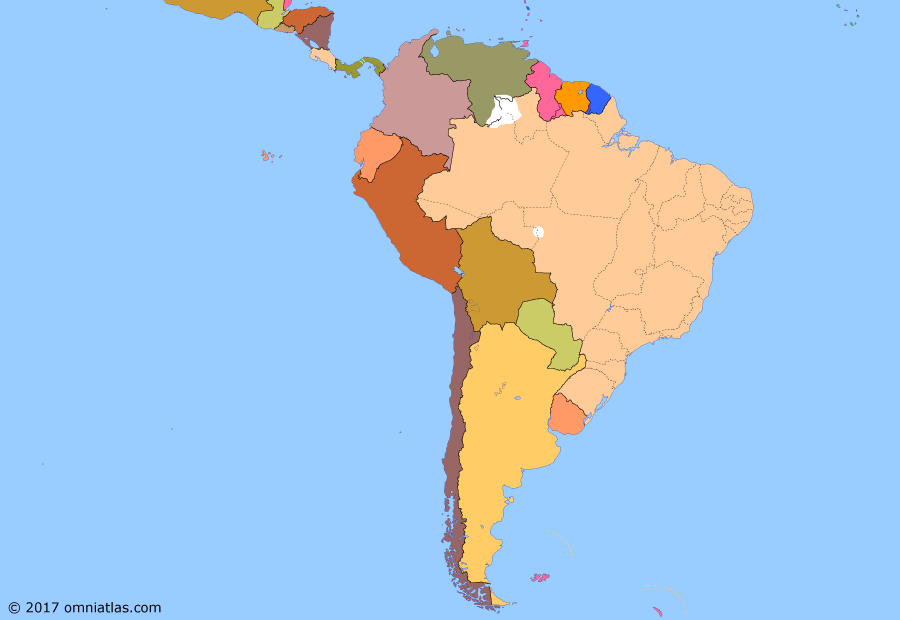South America 1948: Rio Pact
Rio Pact
3 Oct 1939 Declaration of Panama
13 Sep 1941 Ecuadorian-Peruvian War
22 Aug 1942 Brazil enters World War II
20 Apr 1945 South America in World War II
12 Mar 1948 Rio Pact
28 Oct 1962 Cold War reaches Latin America
30 Jul 1970 Exporting the Revolution
1 Mar 1979 Operation Condor
3 Apr 1982 Falklands War
3 Jan 1990 US invasion of Panama
11 Jan 2012 Pink Tide
15 Jan 2024 South America Today
Following the end of World War II, suspicion and hostility grew between the United States and the Soviet Union. In this so-called Cold War, the US sought to establish anti-Communist alliances around the world to contain the Soviet threat. The first such alliance was the Rio Pact, a treaty signed between the US and the nations of Latin America to safeguard the Western Hemisphere.
